The Kansas-Missouri border holds stories that still seem to whisper through the tallgrass and quiet streets. This is where the American Civil War first took root, not with great armies, but with feuds between neighbors who saw the world differently.
When we travel through this land, we can feel the tension that once crackled through its prairies and towns. These Border War sites aren’t just relics of the past; they’re living memorials that invite reflection and understanding.
From the ruins of raided towns to the resilience of communities rebuilt, each stop reveals the courage, conflict, and conscience of a region that once stood at America’s moral crossroads.
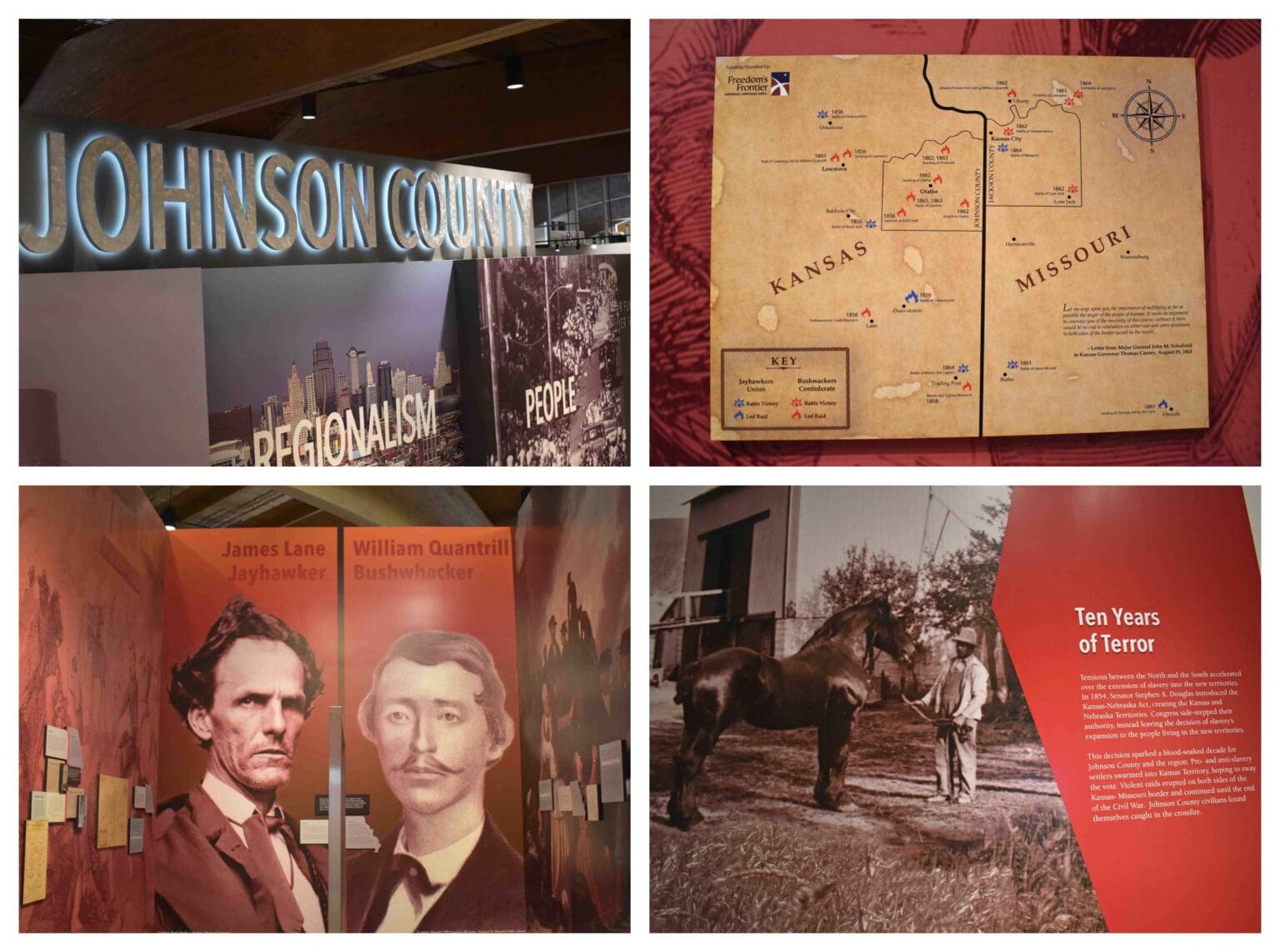
Learning About the Border War
The Johnson County Museum in Overland Park, Kansas, is a fitting place to begin a journey through the Border War’s legacy. Its “Becoming Johnson County” exhibit captures the area’s transformation from unsettled frontier to battleground of beliefs.
Here, displays tell of families who fled Missouri violence to find safety across the state line, only to discover that neutrality was rarely possible. Artifacts, letters, and maps bring to life the tension of ordinary citizens swept into extraordinary times.
We lingered by an exhibit showing how settlers built communities even as political storms gathered. Standing there, we could almost hear their debates echo through time, proof that freedom often demands courage, even from those who never sought it.
Address: 8788 Metcalf Avenue, Overland Park, Kansas
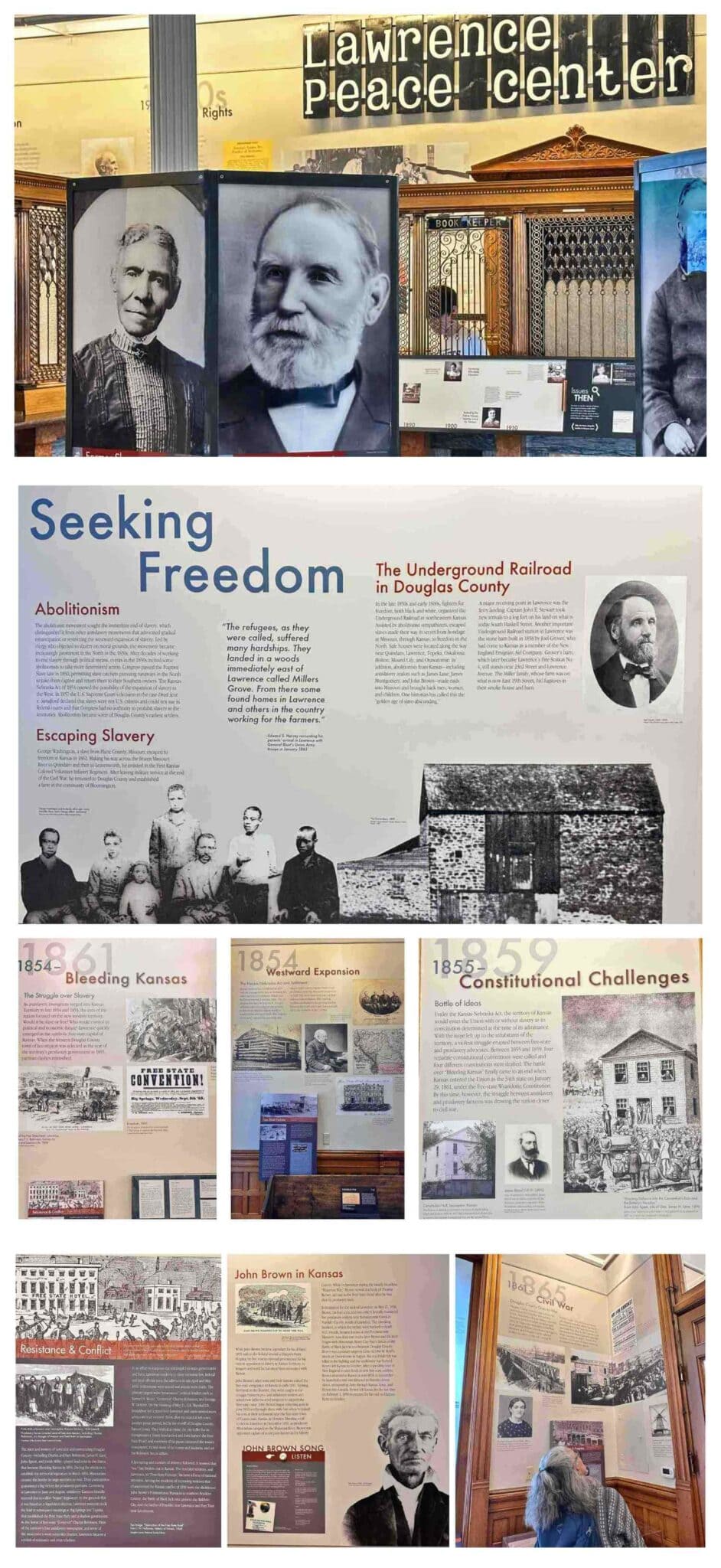
A Town Twice Sacked
Few towns in America bear the scars of war like Lawrence, Kansas. In 1856, pro-slavery forces burned parts of it to the ground. Then, in 1863, William Quantrill’s raiders returned in one of the war’s darkest moments, killing nearly 200 men and boys.
The Watkins Museum of History preserves the stories of that horror and the town’s remarkable recovery. Inside, we found photos of survivors who rebuilt Lawrence from ashes, determined that their belief in freedom would not die with their loved ones.
Today, Massachusetts Street bustles with life and laughter. As we sip coffee beneath a sign that once marked a raid route, we think of how Lawrence transformed tragedy into resilience, a testament to Kansas’s enduring spirit.
Address: Watkins Museum of History, 1047 Massachusetts Street, Lawrence, Kansas
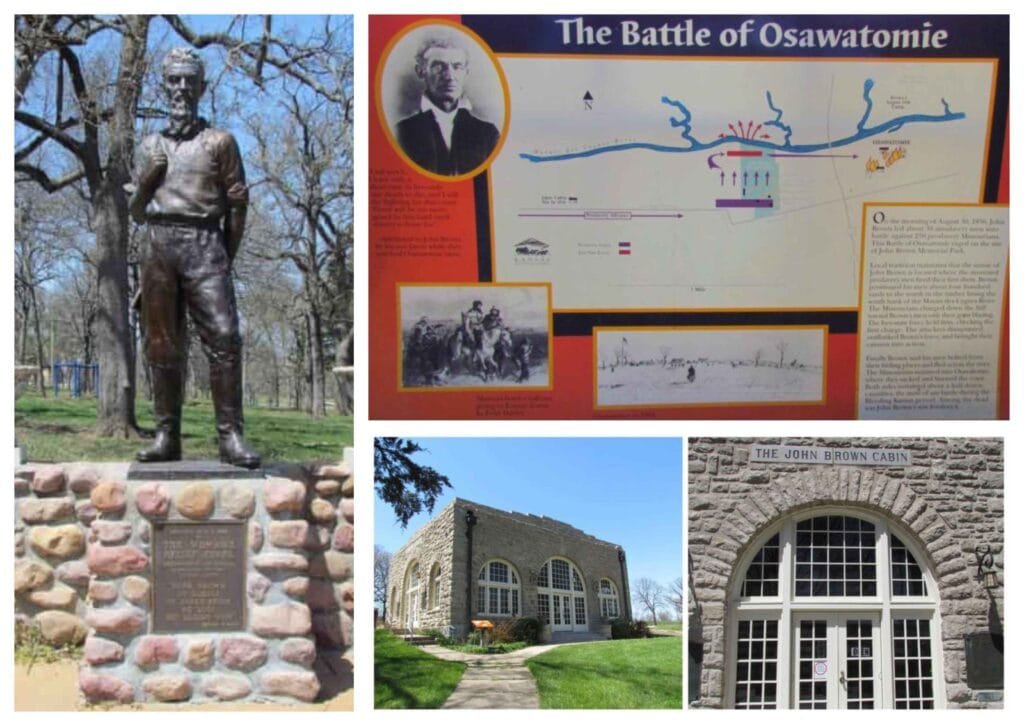
The Battle of Osawatomie and John Brown’s Legacy
The small town of Osawatomie is forever tied to one of history’s most polarizing figures, John Brown. In 1856, Brown and his followers faced a larger pro-slavery force in a battle that helped ignite the national conflict.
The John Brown Museum State Historic Site preserves the simple cabin that served as his headquarters. Inside, displays detail how Brown’s fiery conviction and violent defense of freedom made him both hero and villain.
Standing outside, the prairie wind rustles through the trees, carrying echoes of musket fire long gone. Here, in this quiet Kansas field, the moral struggle that defined a nation feels startlingly close and hauntingly human.
Address: John Brown Museum State Historic Site, 1000 Main Street, Osawatomie, Kansas
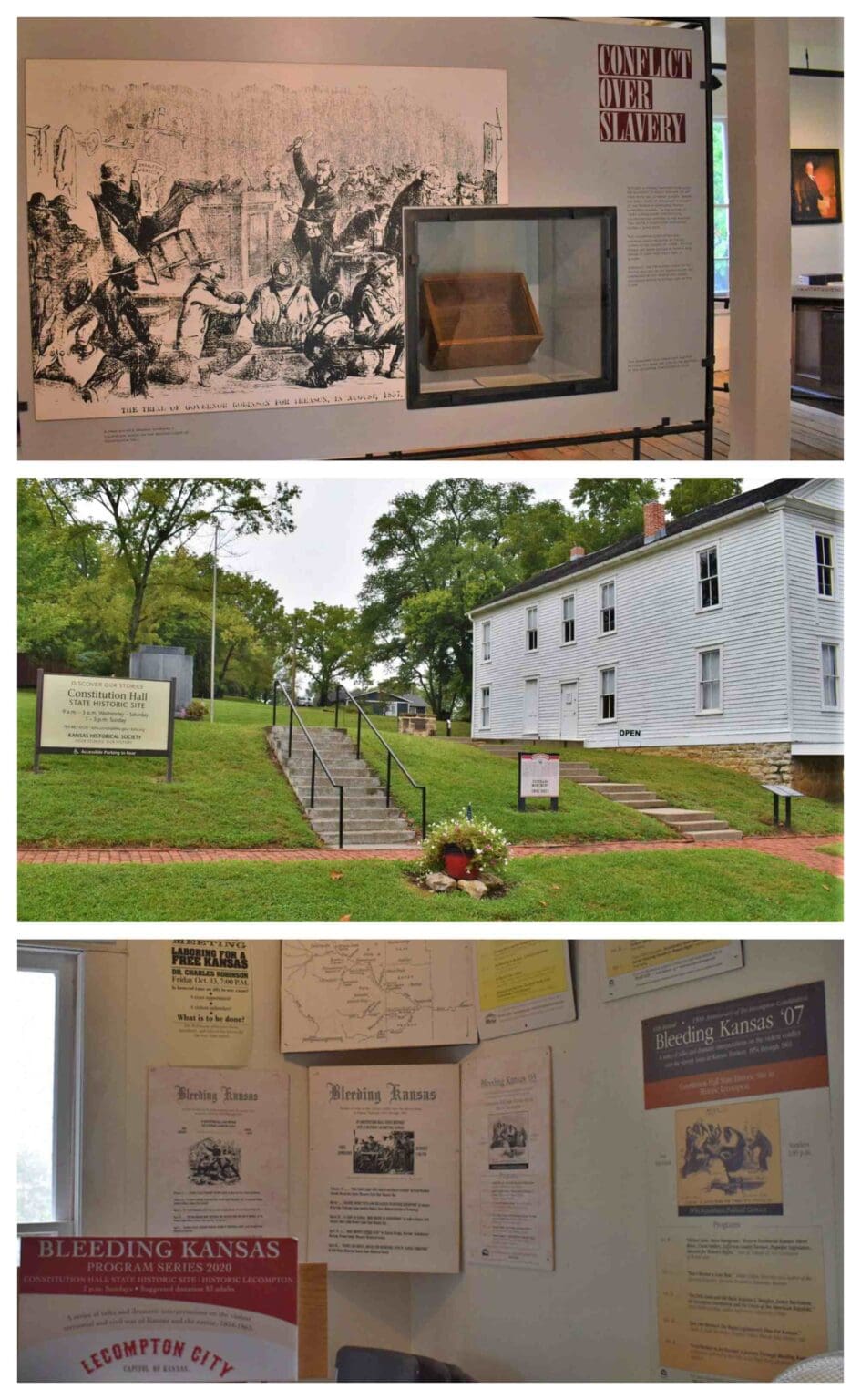
Kansas’s Territorial Capitol's Role in Rising Tensions
Before the first battle was fought, Kansas’s destiny was being written in Lecompton. This small town once held the hopes of pro-slavery advocates who tried to shape the territory’s constitution in their favor.
At Constitution Hall State Historic Site, the creaking floors and flickering lamplight set the stage for political drama. It was here that the infamous Lecompton Constitution was drafted, an effort to admit Kansas as a slave state that only deepened the nation’s divide.
As we walked through the historic chamber, we could almost sense the weight of decisions made here. Lecompton is a reminder that the Border War was not only fought with rifles, but also with words and ideals that still echo in America’s conscience.
Address: Constitution Hall State Historic Site, 319 Elmore Street, Lecompton, Kansas
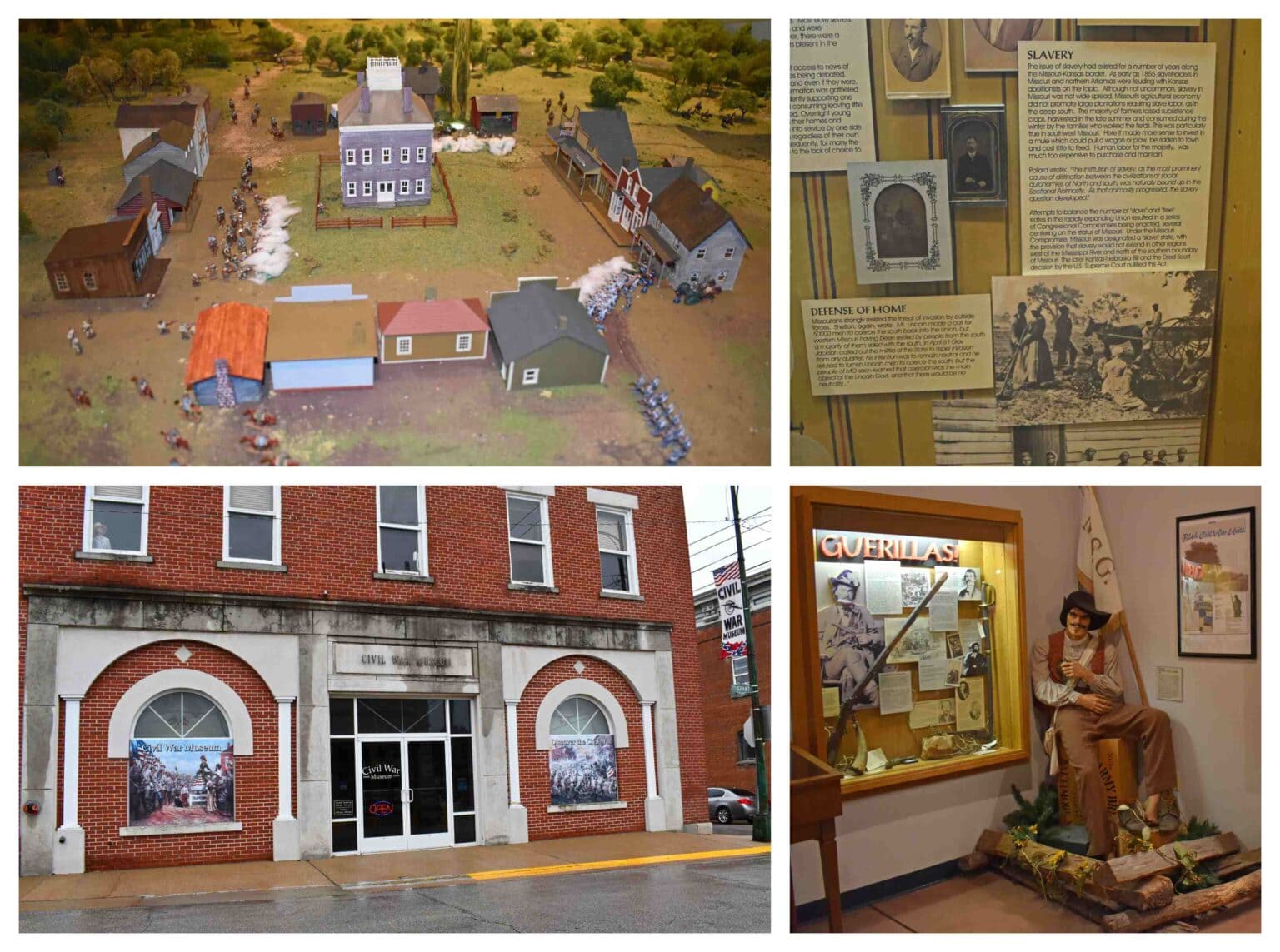
Remembering the First Major Battle
Carthage, Missouri, witnessed one of the earliest major engagements of the Civil War on July 5, 1861. The Battle of Carthage pitted inexperienced troops against each other in a chaotic and bloody initiation into war.
At the Battle of Carthage Museum, relics from that day: uniform buttons, bullet fragments, and faded flags, tell a story of confusion and courage. Young men on both sides fought without knowing that this would only be the beginning of years of suffering.
Outside, historical markers trace troop movements through farmland that now lies peaceful and green. Standing there, it’s hard to imagine the noise, the fear, and the bravery that once filled this Missouri air.
Address: Battle of Carthage Museum, 205 Grant Street, Carthage, Missouri

Hemp Bales Strategy
In the fall of 1861, Lexington, Missouri, became the stage for one of the war’s most unusual tactics. Confederate troops used soaked hemp bales as rolling shields, pushing them forward to capture Union defenses.
The Battle of Lexington State Historic Site preserves the ground where that strategy played out. The stately Anderson House, still pocked with bullet holes, bears silent witness to the intensity of that fight.
We read about the trenches, feeling the weight of ingenuity born from desperation. This site reminded us that even in war, creativity can emerge, but at a cost measured in human lives and lasting sorrow.
Address: Battle of Lexington State Historic Site, 1101 Delaware Street, Lexington, Missouri
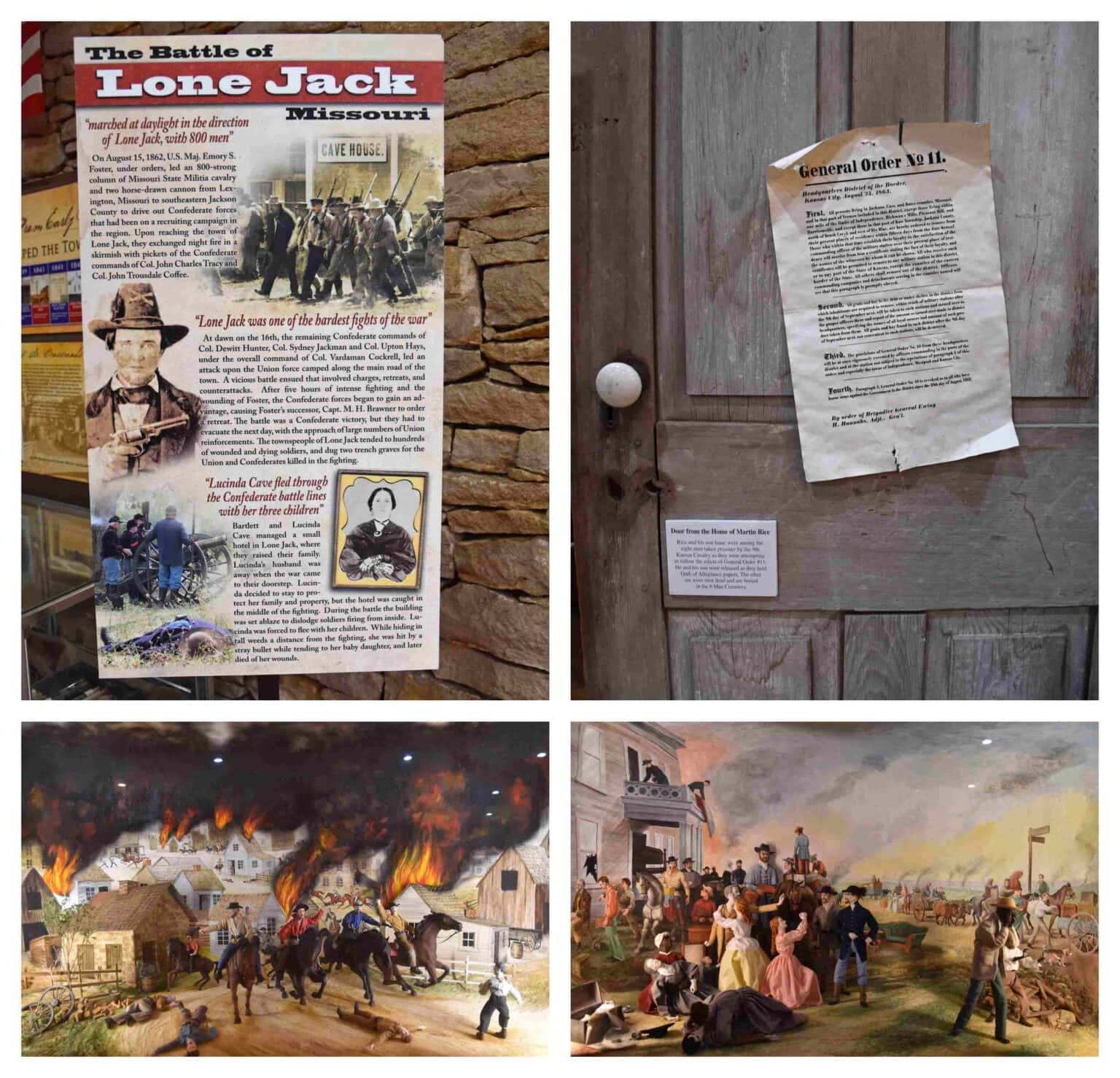
The War’s Harsh Realities
The Battle of Lone Jack in August 1862 left a lasting scar on western Missouri. Today, the Lone Jack Civil War Museum tells of that brutal fight, fought mainly between local militias, neighbors who once shared fence lines and Sunday dinners.
But the story doesn’t end there. After years of guerrilla warfare, Union authorities issued Order No. 11, forcing civilians from four Missouri counties to leave their homes. Entire communities were emptied and burned, leaving behind only ashes and bitterness.
As we stood among the graves at Lone Jack Cemetery, we sensed the sorrow that lingers in the soil. These stories remind us that the Border War’s toll was as emotional as it was physical.
Address: Lone Jack Civil War Museum, 301 South Bynum Road, Lone Jack, Missouri

The Turning Point of the Border War
By 1864, the war along the border had reached a climax. The Battle of Westport, fought in what is now Kansas City, marked a decisive turning point in Union control of Missouri.
Today, the Wornall House stands as a preserved witness to that chaos. Once a family home turned field hospital, it offers a deeply human view of war. The scent of aged wood and the sight of old medical tools paint a vivid picture of both bravery and despair.
As we wandered its rooms, we thought of the soldiers who once lay here, uncertain of victory or survival. Westport’s story reminds me that even triumph carries its share of loss.
Address: John Wornall House Museum, 6115 Wornall Road, Kansas City, Missouri

Refuge, Training Ground, and Supply Depot
Fort Scott, Kansas, was already a frontier post before the Civil War, but its role expanded dramatically once the conflict began. It became a Union stronghold, a training camp for recruits, and a refuge for those fleeing violence.
Walking across its parade grounds, we imagined the clatter of boots and the clank of wagons hauling supplies to distant posts. The limestone buildings are remarkably preserved, their walls echoing the determination of those who served here.
Each room offers another piece of the story, of soldiers, refugees, and ordinary people caught in an extraordinary moment. Fort Scott remains one of the most complete and compelling Border War sites in the region.
Address: Fort Scott National Historic Site, 1 Old Fort Boulevard, Fort Scott, Kansas

Reflections on Border War Sites
As we look back on our Border War site visits, we find ourselves whisked back in time. The grass sways, the horizon glows, and the echoes of history feel close enough to touch.
These sites are not just places to learn; they are places to listen. Each tells a chapter of America’s struggle to reconcile ideals with reality, freedom with fear.
Traveling these roads reminds us that history is not meant to divide us but to guide us. When we walk these fields and streets with open hearts, we carry forward the promise that, even from the darkest past, understanding can still bloom.
If you’ve discovered other Border War sites or little-known places tied to this powerful history, we’d love to hear about them. Share your recommendations, and let’s keep exploring the crossroads where America’s conscience was tested and, in many ways, defined.






Great article. I’ve read several books on the border war and visited a few places while stationed at Ft Riley.
Once I retire, I plan on moving back home to SE Kansas and continue to visit more historic sites along both sides of the K/M border.
Other good Border war sites are the Mer De Cyne Massacre site and in 1863 the Battle of Drum Creek where the Osage massacured a group of Confederate Offi ers on a recruiting mission in SE Kansas.
Thanks. There are so many unique sites along the border that we still need to visit. We hope you have lots of fun adventures when you retire.
This was such a fascinating read! I’ve driven past some of these spots near Kansas City and never realized the deep Civil War history behind them. Now I want to plan a weekend exploring a few of these sites myself.
I love hearing that! It’s incredible how many layers of history sit right along our daily routes. Visiting these sites brings that era to life in a way that’s hard to capture on the page. Let us know which ones you explore first!
I never knew the Border War stretched so far south into Missouri! Thanks for including the smaller towns, it’s great to see places like Lexington and Carthage get some attention.
Those smaller towns are real gems! Each one has a story waiting to be uncovered, and the locals always have fascinating insights to share. I’m so glad you appreciated that part of the journey.